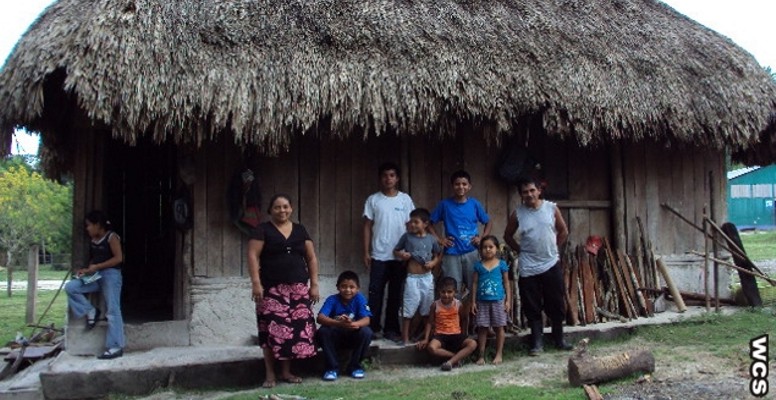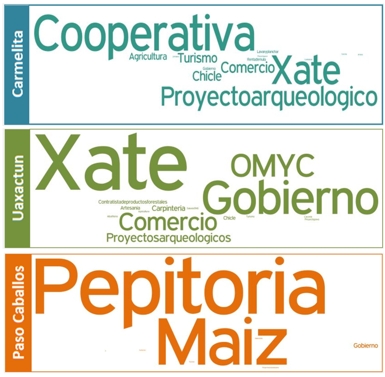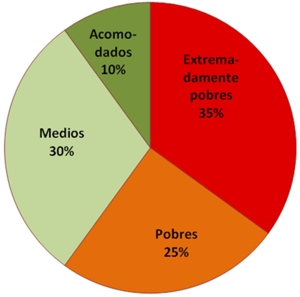 |
|
A family in Uaxactún, Flores, Petén
|
Using baseline census data from the year 2000 and projections of population growth, the current estimated population of the MBR is 118,000 inhabitants. Of these inhabitants, close to 15,000 (13%) are found in the municipal capital of Melchor de Mencos, considered urban, while the rest of the 103,000 inhabitants (87%) are found in rural areas. The population of the MBR is settled in an estimated 192 rural communities (excluding Melchor de Mencos), with an average of close to 500 inhabitants per community.
 |
Income-generating activities in Carmelita, Uaxactún y Paso Caballos. The size of the text indicates the average proportion of family income generated by each activity.
|
74.6% of the MBR’s inhabitants live in the buffer zone, 10.6% in the multiple-use zone, and 14.8% in some of the nuclear zones - although these numbers only refer to the location of the settlement, not necessarily their areas of influence. Quite frequently, inhabitants of a site in one of the zones or management areas will have interests or areas of production in adjacent zones, or, in some cases, even quite far from the site of their settlement.
The population of the MBR has grown very rapidly since the 1960s, and this trend is predicted to continue over the medium term. High total fertility rates and high levels of migration make the MBR a site with possibly one of the fastest-growing populations in Guatemala. Projections made in the year 2000, using average migration data and the total fecundity rate, predicted that by the year 2020 the MBR would have a population of 170,000 people in rural communities alone. Nonetheless, even with these numbers the MBR would remain the least densely populated area in Guatemala.
 |
|
Proportion of inhabitants by poverty level in the MBR (MFEWS, 2009 )
|
Today, the populations of the MBR depend primarily on agricultural labor as a source of income, followed by the sale of cattle, formal paid work, and trade as other key productive activities. Minor income-generating activities include the sale of agricultural products, traditional craft production, and remittances from outside the community. Livelihood strategies vary considerably between communities. For example, in Carmelita and Uaxactún – two of the older communities of the reserve – the majority of inhabitants depend on forest products for subsistence, and cattle ranching and agriculture do not surpass 5% of income generation. In contrast, in Paso Caballos, a Q’eqchi’ Maya community established in 1992, about 92% of yearly household income comes from only two agricultural crops.
It is estimated that up to 35% of the population of the MBR lives in extreme poverty, and 25% in conditions of poverty. In other words, more than half of the population of the reserve lives below the poverty line.